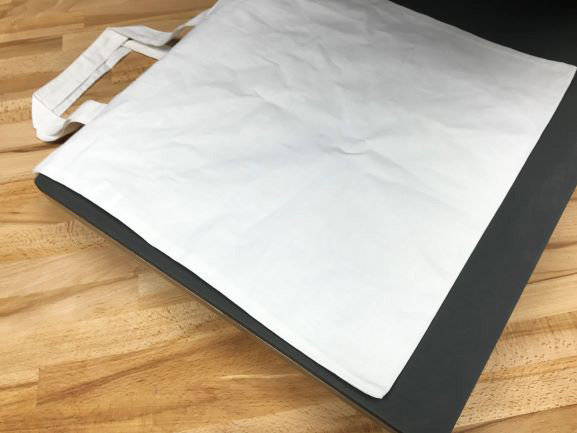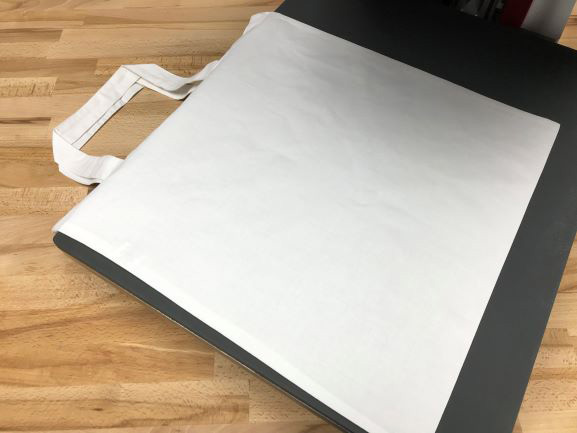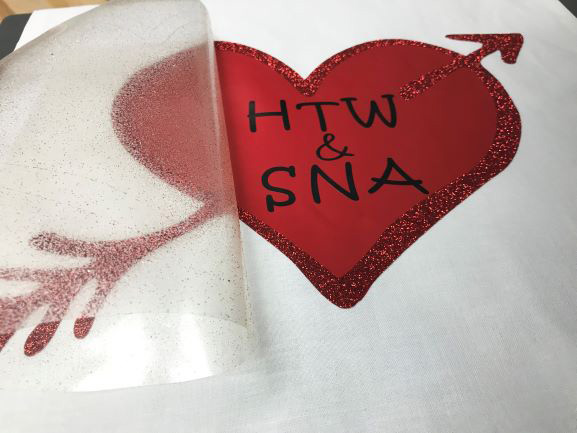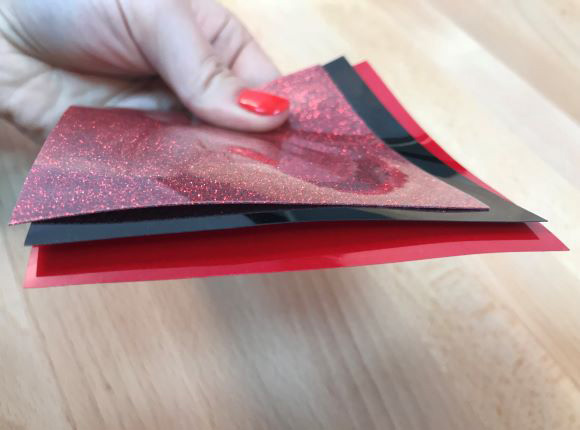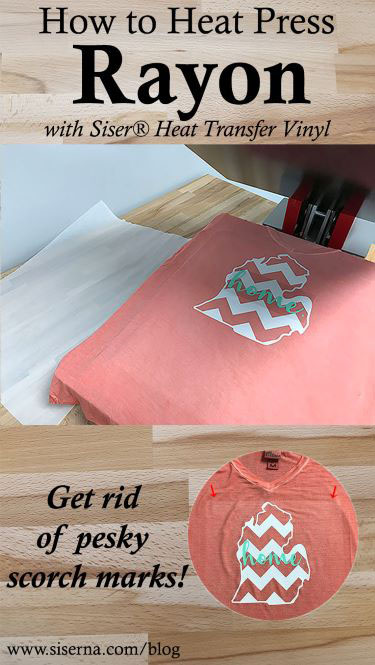There’s a lot of heat transfer vinyl advice available online, but not all advice is good advice! Remember when your parents said, “If all your friends jumped off a bridge, then would you too?” That’s like us saying, “If all your friends press each HTV layer for the full time, then would you too?” Every now and again we hear some HTV tips that make us raise our eyebrows and wonder why everyone has jumped off the bridge.
So today, authorized distributor, Heat Transfer Warehouse (HTW,) is teaming up with Siser North America (SNA) to de-bunk some of the advice that’s floating around and share a few HTV tricks direct from the manufacturer. Think of these tips as your steps down the ladder and off of the bridge!
1. Tips for Garment Prep
Pre-pressing your garment before decorating with HTV creates the best application surface possible. A moisture and wrinkle free fabric allows for the greatest adhesion between the fibers of the fabric and the adhesive on the HTV, as well as ensures a smooth finished look. Pre-pressing is especially important for cottons which tend to shrink more than other fabrics.
However, there are some rare instances that a pre-press is not needed. If you’re working with a highly heat sensitive fabric, like some types of nylon, then a pre-press may harm more than help your project. Additionally, a pre-wash is not always necessary either. If you prefer to wash your blanks, make sure to steer clear of liquid fabric softeners which can leave behind a heat transfer vinyl repelling residue.
2. Tips for Application Pressure
Heat Transfer vinyl needs the combination of heat + time + pressure to equal a long-lasting application. Unfortunately, when pressure gets dropped from the equation the heat transfer vinyl usually drops off the shirt as well. When using a Cricut® EasyPress™, the pressure is only regulated by how much force you manually apply throughout the whole application time. Whereas a heat press can be adjusted to accurately and evenly press more (or less) firmly, and all you have to do is pull the handle down once.
For your convenience, the time, temperature, and pressure settings can be found on the Siser App. You might notice that EasyWeed® Stretch needs firmer pressure than regular ol’ EasyWeed®. Stretch’s lightweight and slim figure isn’t the only difference between the two materials however! With extra elasticity and a matte finish, EasyWeed® Stretch is a favorite for more than just sports related garments (like the cotton tote bag used in this project!)
One last note on pressure: Firm pressure is great for Stretch, but not necessary all the time! The weave or texture of the garment does not need to be seen through the HTV to indicate a good press. Additionally, a clear adhesive halo around the HTV is not a sign of a proper press. The more adhesive squished to the side of your vinyl means the less that’s underneath bonding it to the fabric. In these cases, you may actually need to decrease your pressure. Want to know more about pressure? Check out this video!
3. Tips for Layering HTV
Quick, short presses are best when it comes to layering multiple colors of HTV. When you use this method, we call it “tacking” because you’re giving the material just enough heat and pressure to tack the vinyl down onto the fabric and release from the carrier. As each new color is heat applied, the lower layers also receive the heat, so by the end of the whole process each layer has had between 10-20 seconds of heat and pressure. This is the sweet spot to aim for because you can have too much of a good thing!
Adding more and more pressing time to your design is going to begin to dry out the HTV, which makes it more susceptible to cracking and peeling. For most Siser® materials, a 3-5 second press is enough to tack a layer down, but with products in the EasyWeed® family you can get away with a 1 second tack!
4. Tips for Mixing Materials
Mixing and matching different types of heat transfer vinyl often creates some of the coolest looks. Many people get excited while creating and cutting their artwork, but when it comes to heat applying they’re nervous to bring the handle down. When in doubt, set your heat press for the HTV in your project that calls for the lowest recommended temperature. Then work your way from the thinnest material (like EasyWeed® Stretch) to the thickest material (Brick™ 600).
You may need to adjust your pressure along the way, especially if you use a heat transfer pillow. If any of the HTV still wants to grip the carrier instead of the fabric, re-press for 1-5 seconds.
5. Tips for Decorating Heat Sensitive Fabrics
You may have noticed that although we include our recommended time, temperature, and pressure settings on the Siser App, this blog post (and many others on the Siser Blog) advocates adjusting those settings to fit the needs of your project. After much testing, the recommended settings yielded the best results. However, there are many instances where you’ll need to deviate from these settings. Most commonly when working with fabrics that are “heat sensitive.” Heat sensitive just means that the fabric has a negative reaction to high heat.
Not to fear! We have a tip for that too. Siser heat transfer vinyl is perfect for all projects since it can be applied at lower temperatures! A low application temperature prevents scorching or heat marks on those delicate fabrics. We recommend a low temperature of 270°-290°F depending on how sensitive your garment is. Since the temperature has been lowered, the pressing time needs to be raised to make up for that heat deficit. A press time of 20-25 seconds altogether is typically sufficient.
When it comes to layering HTV on heat sensitive materials, the less presses the better and you may need to increase your tacking time to 5 seconds because of the lower temperature.
If you finished reading this whole post, give yourself a round of applause! You just made it through Siser’s top 5 tips for heat transfer vinyl! There’s always something new to learn in the world of vinyl decoration. We hope you gained at least a nugget of knowledge today, but if you still have questions please leave a comment. For more tips and tricks from Siser, visit our blog at
www.siserna.com/blog
The Siser products mentioned in this post can be purchased from authorized distributor, Heat Transfer Warehouse. Be sure to like their page on Facebook to keep up with all the latest HTW news!
Like Heat Transfer Warehouse on Facebook Here
About the Author: Lily From Siser North America
style="outline: 0px;">
Lily is Siser's go-to crafter. Her ideas and abilities to incorporate HTV into her projects is inspiring. Well versed in Heat Transfer Vinyl, Lily embraces the methods and materials to deliver creative content week after week!


